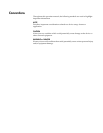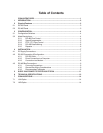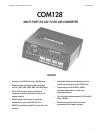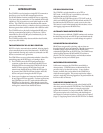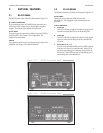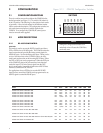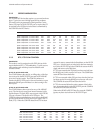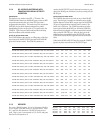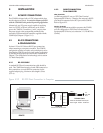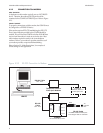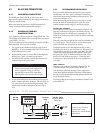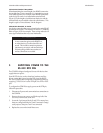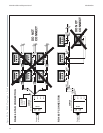COM128 Installation and Operation Manual Schneider Electric
2
1 INTRODUCTION
The COM128 is used to interface a single RS-232 communica-
tions line to up to four RS-485 communications buses.
The RS-485 standard restricts each RS-485 bus to supporting
32 or fewer devices connected to it. The standard also dictates
a 4000 foot (1219 m) maximum overall cable length on an RS-
485 bus. The COM128 is ideal for installations that contain
more than 32 remote devices, or that have devices positioned at
distances greater than could be reached with a 4000 foot cable.
The COM128 has four physically independent RS-485 ports,
allowing communications with up to 128 devices. Data is
transmitted to all four RS-485 ports simultaneously (ie. the
ports are not addressable).
The COM128 provides many features which make it flexible,
easy to use, and reliable:
TWO METHODS OF RS-485 BUS CONTROL
RS-232 is a duplex communications standard, allowing signals
to be transmitted and received simultaneously. RS-485 is half
duplex standard, allowing only one device connected to an RS-
485 bus to transmit at any given time.
The COM128 has two ways to determine whether it should be
transmitting onto the RS-485 buses, or listening to them:
1) The COM128 can use the RTS signal generated by a
computer or other device connected to the RS-232 port.
When the RTS line is asserted, the COM128 will convert
the RS-232 data stream to RS-485 signal levels and
transmit onto the RS-485 buses. When the RTS signal is
de-asserted, the COM128 will listen for data on the RS-
485 bus and pass it through to the RS-232 port.
2) Some types of modems and computer hardware/software
do not support RTS line operation. For these applications,
the COM128 has an Auto RTS mode which monitors the
RS-232 bus for data signals. When data is present, the
COM128 automatically enables the RS-485 transmit mode
and begins to transmit onto the RS-485 buses.
DTE OR DCE OPERATION
The COM128 is switch-selectable to act in DTE or
DCE mode. An RS-232 port is provided for each mode,
eliminating the need for null-modems.
In DTE mode, the COM128 supports a CTS-WAIT mode in
which received RS-485 packets will be buffered until the CTS
line indicates the RS-232 device is ready to receive the data.
This feature is useful when interfacing radio modems or slow
data logging equipment to RS-485 devices.
AUTOMATIC BAUD RATE DETECTION
The microprocessor within the COM128 continuously monitors
the data being received on its RS-232 port, and determines the
correct baud rate. No jumper or switch settings are required.
HIGH ELECTRICAL ISOLATION
RS-485 buses are generally quite long, and are often run
through electrically noisy environments. The risk of exposure to
transient voltage surges and spikes on an RS-485 line is
substantially higher than on an RS-232 line. The COM128 uses
optical isolation between RS-485 and RS-232 sections to
provide 750 VDC electrical isolation, and includes transient
suppression circuitry on its RS-485 ports.
MICROPROCESSOR CONTROL
Unlike most converters, the COM128 is controlled by a
microprocessor. COM128 features are determined by the
processor, not by its electrical circuitry. As new features
become available, they can be added to the COM128 by a
simple firmware upgrade. This process requires the replace-
ment of a single chip, allowing upgrades to be performed in the
field in a matter of minutes.
LINE DRIVER COMPATIBILITY
Short-haul modem/line drivers, such as the Gandalf mLDS,
draw their power from the RS-232 DTR line. The COM128 will
support these devices by means of a simple process that
requires the movement of a jumper within the COM128 case.
The process requires only a screwdriver and should take no
more than a few minutes to perform. Please refer to Chapter 5
(Page 12) "Supplying Power to the RS-232 DTR Pin" for details.





